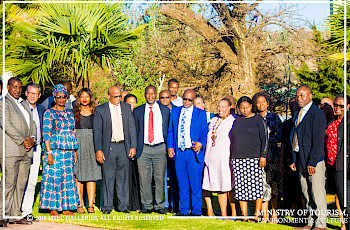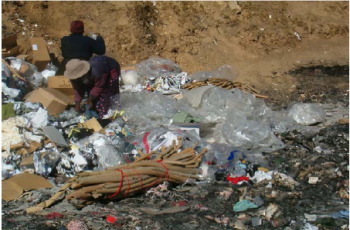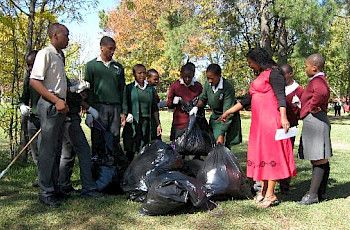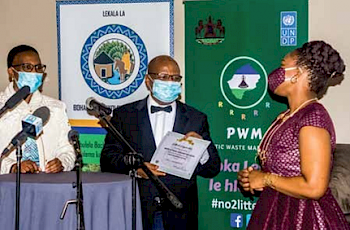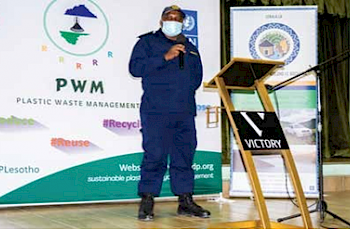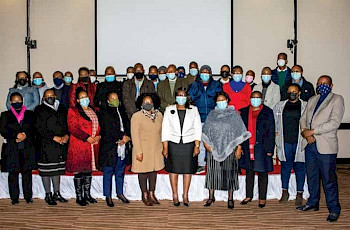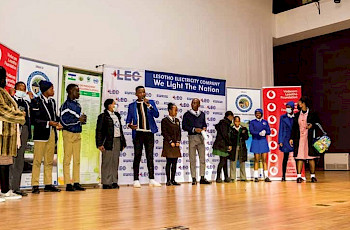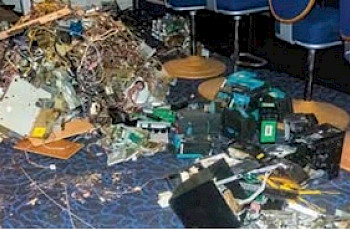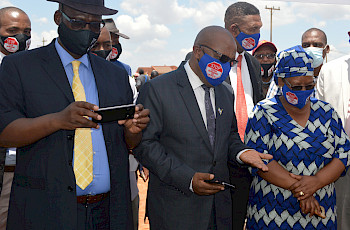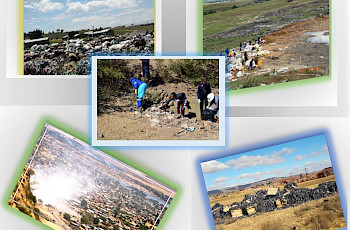Lesotho, officially the Kingdom of Lesotho, is an enclaved country within the border of South Africa. 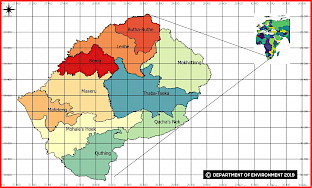 It is located between latitudes 28ºS and 31ºS and longitudes 27ºE and 30ºE. Lesotho is just over 30,000 km2 (11,583 sq mi) in size and has a population of around 2 million. Its capital and largest city is Maseru. The country is dominated by topography higher than 1 000 m above sea level.
It is located between latitudes 28ºS and 31ºS and longitudes 27ºE and 30ºE. Lesotho is just over 30,000 km2 (11,583 sq mi) in size and has a population of around 2 million. Its capital and largest city is Maseru. The country is dominated by topography higher than 1 000 m above sea level.
Lesotho has experienced marked demographic changes over the recent years in terms of age structure, urbanisation, settlement and spatial distribution with far reaching implications on the environment and other social services. Increasing trends in urbanisation are already stretching demand for services in waste management especially in unplanned settlements and industrial estates.
Over the years, waste management has been one of the major environmental concerns globally. In recognising the impacts of improper management of waste, the international community has made several attempts through Multilateral Environmental Agreements (MEAs) to address these issues and provide frameworks that Lesotho has adopted. Lack of capacity and fragmented institutional arrangements to manage waste are some of the prevailing factors in the country, with far-reaching effects on human health and the environment.
Lesotho as a developing country is also faced with waste management issues such as health and environment concerns. Waste management has not received the necessary attention that it requires, even the extent of roll-out of national initiatives to other districts, is low. This has resulted in waste management issues being neglected in the development process and the country failing to view waste as a resource to be sawn for its prosperity but rather as a nuisance (MTEC 2014). It is for this reason that it is accorded a minor percentage of the national budget. In turn, the limited funding restricts the capacity to manage waste.
The absence of legislation pertaining to waste management has imposed a serious problem as roles and responsibilities are not clearly defined. For instance, the Department of Environment (DoE) is legally mandated to coordinate all environment management issues including waste management. Whereas the Ministry of Local Government and Chieftainship Affairs(MoLGC) through its councils is responsible for waste management in their assigned areas. The current set-up where DoE is not an independent authority makes the very same mandated role of DoE difficult to ensure compliance. In addition, the nonexistence/establishment of an Environmental unit as proposed in the Environment Act, in the MoLGC hinders smooth coordination of waste issues between the two Ministries
Traditionally, the collection of statistics on wastes has had a relatively low priority in the country.The only attempt to date was in 2006 [Baseline assessment for developing an integrated solid waste management for Maseru]. Consequently, the statistical data base for waste is out-dated. This paucity in the availability or reliable statistics on both waste generation and disposal is seen as an impediment to identifying the best or most practical waste management options, establishing priorities and to assessing the effectiveness of policy action. The lack of standard classifications and definitions of waste types is a further impediment to the development of proper measures to address the identified waste problem.
The strengths and weaknesses facing waste management in Lesotho are that although there are noble initiatives such as
- Integrated Solid Waste Management Plan of 2007.
- Recycling of solid waste management and greening of five schools in Maseru urban areas 2009 to 2010
- Economics of Public Service Delivery: Solid Waste Management & Income Generation 2009 to 2012
there seems to be no consistency or continuity to see the above efforts to fruition post project implementation phase.
Baseline studies for the demonstration projects
- Baseline assessment for developing an integrated solid waste management for Maseru
- Identification and Quantification of Dioxins and FuransIdentification and Quantification of Dioxins and Furans
- Reviewing concepts of waste management in Lesotho (Maseru and Maputsoe)

